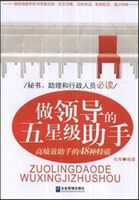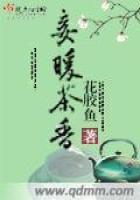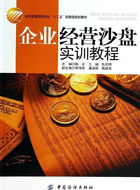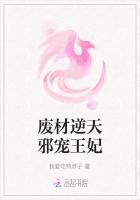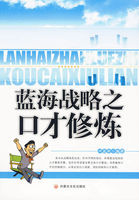Several of Bain's earlier patents are taken out in two names, but this was perhaps owing to his poverty compelling him to take a partner. If these and other inventions were substantially his own, and we have no reason to suppose that he received more help from others than is usual with inventors, we must allow that Bain was a mechanical genius of the first order --a born inventor. Considering the early date of his achievements, and his lack of education or pecuniary resource, we cannot but wonder at the strength, fecundity, and prescience of his creative faculty. It has been said that he came before his time; but had he been more fortunate in other respects, there is little,doubt that he would have worked out and introduced all or nearly all his inventions, and probably some others. His misfortunes and sorrows are so typical of the 'disappointed inventor' that we would fain learn more about his life; but beyond a few facts in a little pamphlet (published by himself, we believe), there is little to be gathered; a veil of silence has fallen alike upon his triumphs, his errors and his miseries.
V. DR. WERNER SIEMENS.
THE leading electrician of Germany is Dr. Ernst Werner Siemens, eldest brother of the same distinguished family of which our own Sir William Siemens was a member. Ernst, like his brother William, was born at Lenthe, near Hanover, on December 13, 1816. He was educated at the College of Lubeck in Maine, and entered the Prussian Artillery service as a volunteer. He pursued his scientific studies at the Artillery and Engineers' School in Berlin, and in 1838 obtained an officer's commission.
Physics and chemistry were his favourite studies; and his original researches in electro-gilding resulted in a Prussian patent in 1841.
The following year he, in conjunction with his brother William, took out another patent for a differential regulator. In 1844 he was appointed to a post in the artillery workshops in Berlin, where he learned telegraphy, and in 1845 patented a dial and printing telegraph, which is still in use in Germany.
In 1846, he was made a member of a commission organised in Berlin to introduce electric telegraphs in place of the optical ones hitherto employed in Prussia, and he succeeded in getting the commission to adopt underground telegraph lines. For the insulation of the wires he recommended gutta-percha, which was then becoming known as an insulator.
In the following year he constructed a machine for covering copper wire with the melted gum by means of pressure; and this machine is substantially the same as that now used for the purpose in cable factories.
In 1848, when the war broke out with Denmark, he was sent to Kiel where, together with his brother-in-law, Professor C. Himly, he laid the first submarine mines, fired by electricity and thus protected the town of Kiel from the advance of the enemies' fleet.
Of late years the German Government has laid a great network of underground lines between the various towns and fortresses of the empire; preferring them to overhead lines as being less liable to interruption from mischief, accident, hostile soldiers, or stress of weather. The first of such lines was, however, laid as long ago as 1848, by Werner Siemens, who, in the autumn of that year, deposited a subterranean cable between Berlin and Frankfort-on-the-Main. Next year a second cable was laid from the Capital to Cologne, Aix-la-Chapelle, and Verviers.
In 1847 the, subject of our memoir had, along with Mr. Halske, founded a telegraph factory, and he now left the army to give himself up to scientific work and the development of his business. This factory prospered well, and is still the chief continental works of the kind.
The new departure made by Werner Siemens was fortunate for electrical science; and from then till now a number of remarkable inventions have proceeded from his laboratory.
The following are the more notable advances made:--In October 1845, a machine for the measurement of small intervals of time, and the speed of electricity by means of electric sparks, and its application in 1875 for measuring the speed of the electric current in overland lines.
In January 1850, a paper on telegraph lines and apparatus, in which the theory of the electro-static charge in insulated wires, as well as methods and formula: for the localising of faults in underground wires were first established. In 1851, the firm erected the first automatic fire telegraphs in Berlin, and in the same year, Werner Siemens wrote a treatise on the experience gained with the underground lines of the Prussian telegraph system. The difficulty of communicating through long underground lines led him to the invention of automatic translation, which was afterwards improved upon by Steinheil, and, in 1852, he furnished the Warsaw-Petersburg line with automatic fast-speed writers.
The messages were punched in a paper band by means of the well-known Siemens' lever punching apparatus, and then automatically transmitted in a clockwork instrument.
In 1854 the discovery (contemporaneous with that of Frischen) of simultaneous transmission of messages in opposite directions, and multiplex transmission of messages by means of electro-magnetic apparatus. The 'duplex' system which is now employed both on land lines and submarine cables had been suggested however, before this by Dr.
Zetsche, Gintl, and others.
In 1856 he invented the Siemens' magneto-electric dial instrument giving alternate currents. From this apparatus originated the well-known Siemens' armature, and from the receiver was developed the Siemens' polarised relay, with which the working of submarine and other lines could be effected with alternate currents; and in the same year, during the laying of the Cagliari to Bona cable, he constructed and first applied the dynamometer, which has become of such importance in the operations of cable laying.







